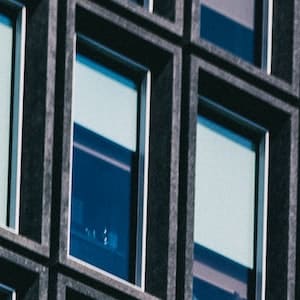build a better mousetrap: Idiom Meaning and Origin
What does ‘build a better mousetrap’ mean?
When someone says "build a better mousetrap," it means to find a more effective solution to a problem or to improve upon an existing idea or product. It implies the need for innovation and improvement in order to succeed.

Idiom Explorer
The idiom "make a better door than a window" means that someone or something is blocking the view or hindering the ability to see or understand clearly.
The idiom "lay eggs" means to produce or create something, often used to describe the act of generating new ideas, inventions, or solutions.
"Keep it moving" means to continue forward or progress without stopping or getting distracted. It suggests maintaining a steady pace or momentum in order to achieve a goal or avoid wasting time.
An idiom that means to gain momentum or build up force, often used in the context of a person or group gathering energy or enthusiasm for a task or goal.
The idiom "have other ideas" means to disagree or have a different plan or opinion than what has been suggested or expected.
The idiom "hack it" means to manage or cope with a situation or task despite difficulties or challenges. It implies the ability to handle or succeed in a particular situation, often through perseverance or improvisation.
The idiom "go back to the drawing board" means to start over or try a different approach because the current one has failed or is not effective.
"Give something a try" means to attempt or test something with the hope of achieving a desired outcome.
The idiom "get the better of" means to overcome or defeat someone or something in a competition, argument, or struggle.
Decoding the Trap
The idiom "build a better mousetrap" is a commonly used expression in the English language. It is often used to convey the idea of improving upon an existing concept or invention in an attempt to achieve better results. The idiom is derived from a quote attributed to Ralph Waldo Emerson, who emphasized the notion of innovation and the recognition of exceptional talent or ability.
The phrase "build a better mousetrap" has its roots in the literal sense of creating an improved mousetrap. Mousetraps have been used for centuries to catch or kill mice, and the idiom reflects the idea that there is always room for improvement. It is thought to have gained popularity during a time when the invention and improvement of various household items were in high demand.
This idiom has become a metaphorical representation of the pursuit of excellence and the desire to stand out amongst competition. It suggests that by improving upon an existing idea or product, one can gain recognition and success. This is particularly relevant in business and entrepreneurial contexts, where innovation and differentiation are highly valued.
The concept of "making a better door than a window" aligns closely with the idiom "build a better mousetrap." This idiom suggests that instead of obstructing someone's view like a window, one should create a more accessible and effective solution, like a door. By doing so, it becomes easier for others to understand and appreciate the improvements being made.
Similarly, the phrase "built different" is related to the idiom "build a better mousetrap" as it signifies the creation of something that is distinctive and superior. It suggests that the thing being created is not just another version of what already exists, but rather something that sets itself apart through innovation and exceptional qualities.
When it comes to building a better mousetrap, it is important to have a thorough understanding of the existing options and their limitations. This knowledge allows for targeted improvements that address shortcomings and offer unique solutions. By focusing on the specific needs and preferences of the intended audience, it is possible to create a mousetrap that is more effective, efficient, and user-friendly.
Improving upon an existing mousetrap requires a combination of creativity, technical expertise, and attention to detail. It is important to analyze the design and functionality of current mousetraps, identify areas for improvement, and propose innovative solutions. This could include exploring new materials, refining the mechanical mechanisms, or optimizing the trap's placement and usability.
Communication and collaboration are also essential throughout the process of building a better mousetrap. Seek input and feedback from others who have experience in the field or have encountered similar challenges. This external perspective can provide valuable insights and help steer the development of the improved mousetrap in the right direction.
As the saying goes, "two heads are better than one." By involving others in the process, you can benefit from their diverse perspectives and expertise. This collaboration can spark new ideas and possibilities that may not have been considered otherwise.
Creating a better mousetrap is a continuous journey. It requires an ongoing commitment to research, testing, and refinement. Regularly evaluate the performance of the improved mousetrap and make necessary adjustments to ensure its effectiveness and efficiency. This iterative approach allows for continuous improvement and the ability to meet evolving needs and expectations.
Ultimately, building a better mousetrap is about challenging the status quo and pushing the boundaries of what is possible. It is about recognizing that there is always room for improvement and seeking out opportunities to innovate. By doing so, you can set yourself apart from the competition and achieve recognition for your exceptional ability or talent.
Example usage
Examples of how the idiom "build a better mousetrap" can be used in a sentence:
- John believes that if he can build a better mousetrap, he will be able to outperform his competitors in the market.
- After several failed attempts, Sarah finally realized that she needs to build a better mousetrap to effectively solve the problem.
- The company's CEO announced the launch of their newest product, claiming they have built a better mousetrap to revolutionize the industry.
More "Improve" idioms



